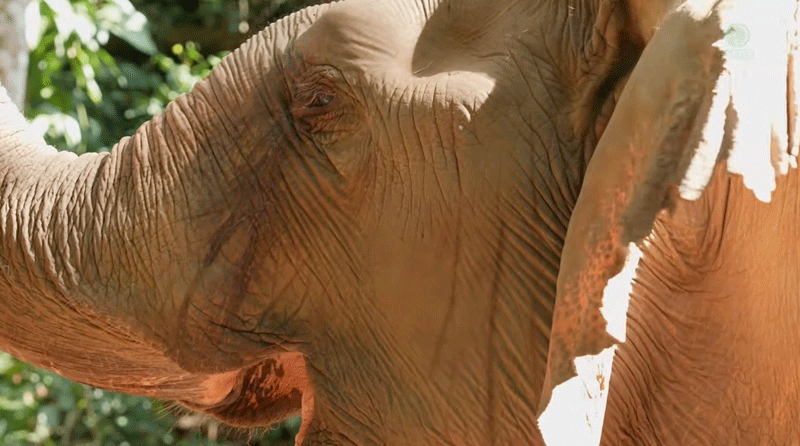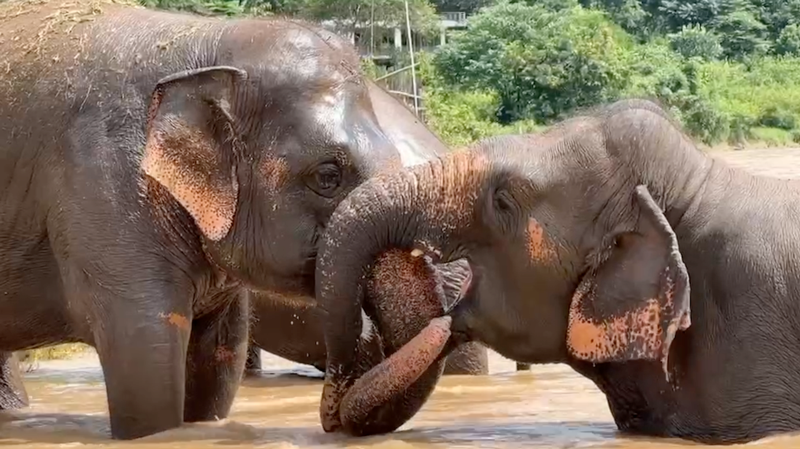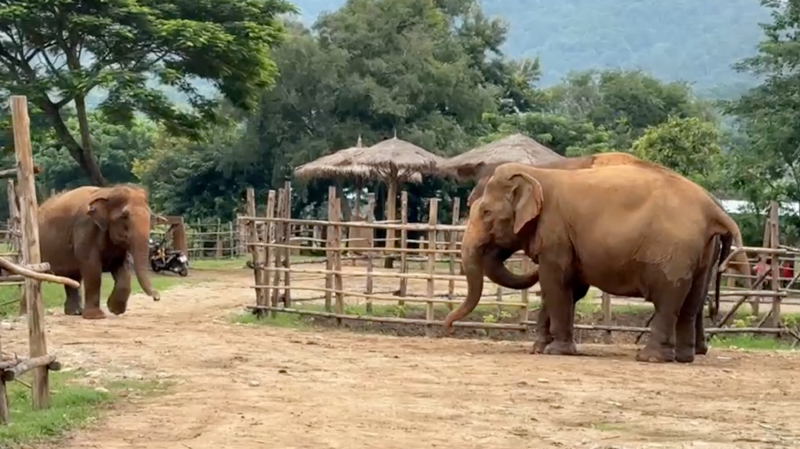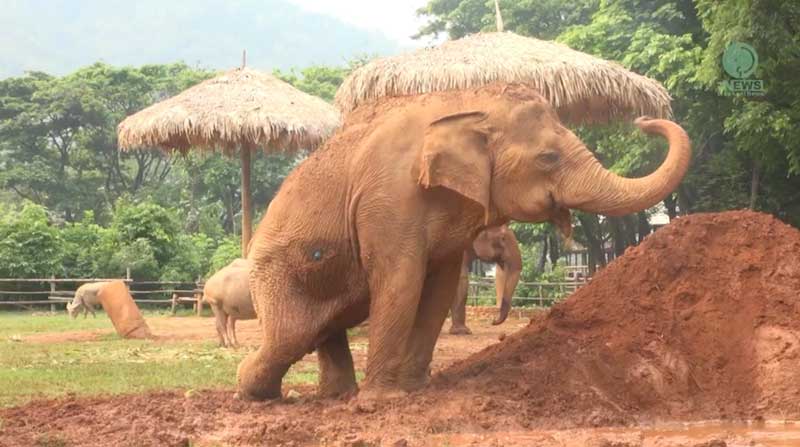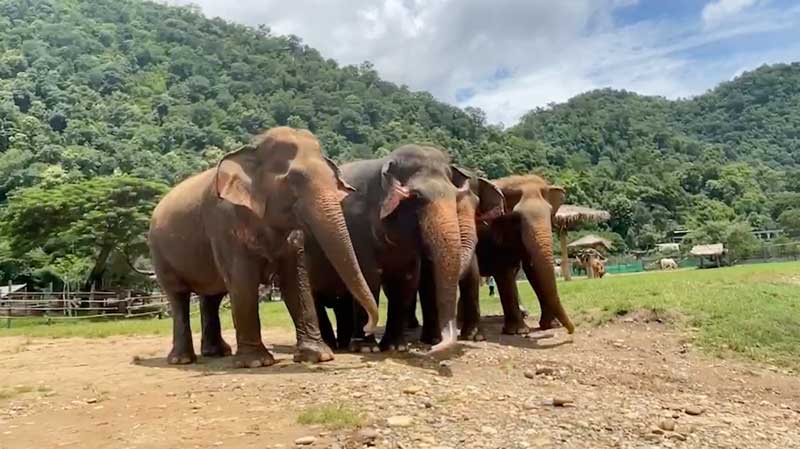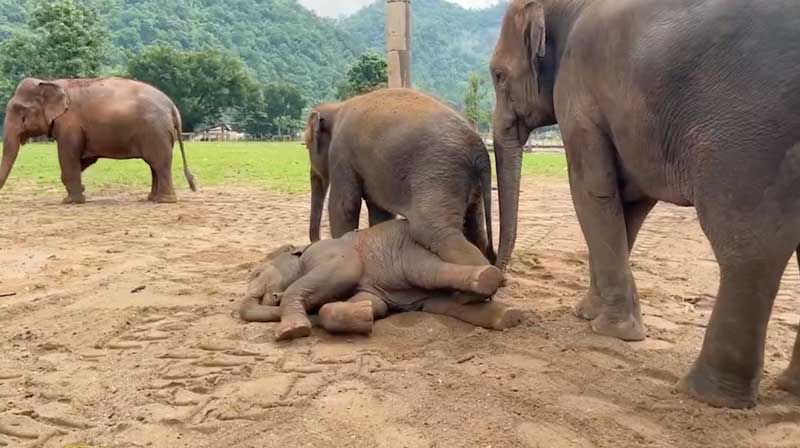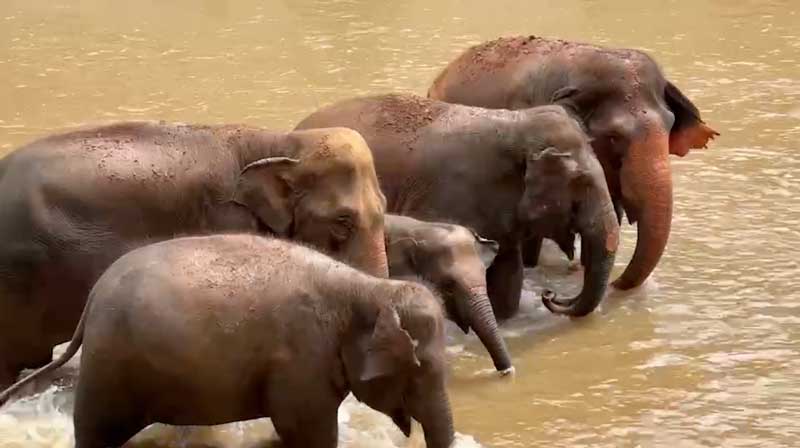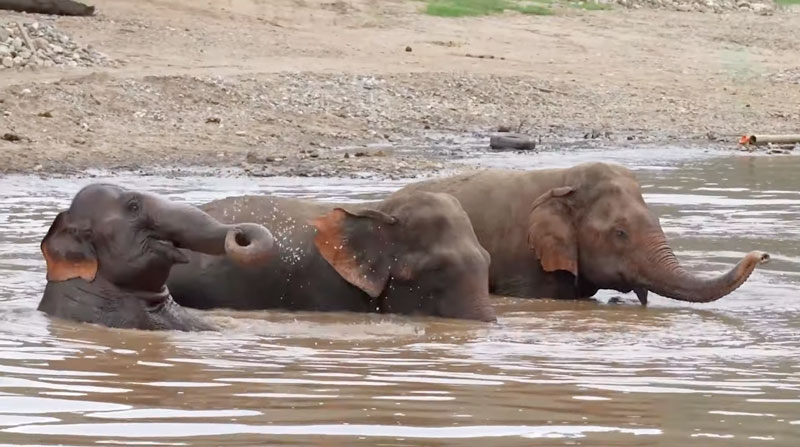A Demonstration of Elephant Communication at Elephant Nature Park by SaoYai and Mae Lanna
This video recorded by Darrick called “Elephants speak affectionately with one another without a syllable perceptible to us”, shows 2 female elephants SaoYai and Mae Lanna, standing apparently silent, not making a sound in the currently gentle flowing water of the Mae Taeng River at Elephant Nature Park.
But elephants communicate with body language movements as well as vocalisations, some of which are outside of human audio recognition. These sounds are called Infrasonic or Infrasound.
The discussion that SaoYai and Mae Lanna are having is mesmerising to watch.
Infrasound (Source – Elephant communication – Wikipedia)
Elephants can produce infrasonic calls which occur at frequencies less than 20 Hz. Infrasonic calls are important, particularly for long-distance communication, in both Asian and African elephants. For Asian elephants, these calls have a frequency of 14–24 Hz, with sound pressure levels of 85–90 dB and last 10–15 seconds. For African elephants, calls range from 15 to 35 Hz with sound pressure levels as high as 117 dB, allowing communication for many kilometres, with a possible maximum range of around 10 km (6 mi).
At Amboseli National Park several different infrasonic calls have been identified:
Greeting rumble – is emitted by adult females members of a family group that have united after having been separated for several hours.
Contact call – soft, unmodulated sounds made by an individual that has been separated from the groups have 2 km (1.2 mi).
Contact answer – made in response to the contact call; starts out loud, but softens toward the end.
“Let’s go” rumble – a soft rumble emitted by the matriarch to signal to the other herd members that it is time to move to another spot.
Musth rumble – distinctive, low-frequency pulsated rumble emitted by musth males (nicknamed the “motorcycle”).
Female chorus – a low-frequency, modulated chorus produced by several cows in response to a musth rumble.
Postcopulatory call – made by an oestrous cow after mating.
Mating pandemonium – calls of excitement made by a cow’s family after she has mated.

